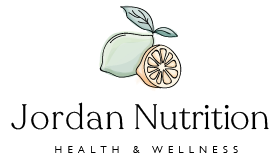Postpartum Recovery Tips for New Mamas
Rewind to 3 months ago. I was on my way to the hospital to delivery my second child. My waters broke around 5am in the morning and half an hour later, my contractions started to get stronger. I called my OBGYN and my husband and I made our way to the hospital. Thank goodness we left when we did. My son, Bode, was born just 2 hours later!
———————————————————————————
Yes those are my son’s feet…
As a mom to two kids (2.5 yrs and nearly 12 weeks) and a healthcare professional working primarily with women, I wanted to share my personal and professional experience of postpartum recovery. This is not to say that I am an expert in this area. It takes a team of professionals to support moms during this time. I have had great experience working with pelvic floor physical therapists, acupuncturists, postpartum doulas, lactation consultants, sleep consultants and many others.
What Is The Postpartum Period?
Consensus is that the postpartum period begins immediately following birth. The end point is less clear cut, but from a medical standpoint it is generally considered the first 6-8 weeks. By then, most body systems have returned to pre-pregnancy state. That said, it’s not the case for everyone and for this reason the American College of Obstetricians and Gynecologists (ACOG) considers postpartum care to extend up to 12 weeks after delivery [1].
Before & Immediately Following Birth
Even if your delivery is quick (that is rare by the way), you are going to feel exhausted. I felt like I had run a marathon despite only being in active labor for about an hour. My first tip is to get ahead by eating something before your contractions really pick up – options could be a small bowl of oatmeal, a banana or some scrambled eggs. It is also wise to pack some snacks in your hospital bag such as squeezy apple pouches, raisins, energy gels and drinks, chocolate, or anything else that will keep you going during labor. Check in with your OBGYN to ensure that you are allowed to eat during delivery as different facilities have different policies on this.
I felt ravenously hungry for 48 hours after delivery so it was handy to have these extra supplies in my hospital bag. I recommend stocking up on protein-based snacks after delivery to help with tissue repair and satisfy your hunger – I loved GFB Bars, Bulletproof Collagen Protein Bars and KIND Protein.
The First Month
The first couple of weeks following birth tend to be the most challenging. Your body is going through a tremendous repair process and running on very little sleep. At the same time, you will also be establishing a healthy milk supply (if you choose to breastfeed).
If you lost a lot of blood during delivery make sure to increase your intake of iron rich foods: red meat and green leafy veggies – I always suggest continuing with your prenatal supplement regardless of how you are feeling. Choose one with added iron if you need it such as Thorne’s Basic Prenatal. I also recommend taking an omega 3 with added Vitamin D. Good meal options include animal - based, hearty soups, stews, bone broths, and casseroles. In an ideal world you would have prepared some meals and frozen them beforehand so you can pop them in the oven. You can also make smoothies with added collagen (such as Needed Collagen Protein* throw in some green veggie powder for added antioxidants and prune juice to alleviate constipation.
Stay hydrated! Aim for at least one gallon of water per day to support milk supply – there are also a range of galactogen products on the market to help up your supply – the research is still a little mixed on how effective these products are but worth giving them a shot. You can try teas (I like Mama Earth Organics Milk Maid tea and Agni Tulsi Cinnamon Tea ) and cookies containing herbs such as fenugreek, oats and brewer’s yeast. Shoutout for Agni’s Oatmeal Chocolate Chip Cookies - delish! Or try making your own if you have the time. Over the first few weeks I sweated profusely at night. This is a natural part of the postpartum experience because of dipping estrogen. To stay hydrated and energized I added copious amounts of electrolytes to my water (I like Ultima Replenish and Pedialyte) and also drank coconut water throughout the day.
Month 2-3
By this point you should be getting into a bit more of a routine. Your newborn is likely to still need feeding every 2-3 hours but they should be sleeping for longer stretches at night (fingers crossed!). Try to sleep when your little one does - you can also try adding a scoop of magnesium powder to a large glass of water before bed to reduce anxiety and sip chamomile tea.
Around this time it might be wise to put in place a longer term, sustainable plan for feeding yourself and your family. Speaking personally, the last thing I felt like doing was meal planning, prepping and grocery shopping. Utilize online delivery options as much as possible.
Meal delivery services were a god send for me. I ordered meal kits when I had some help at home to prep or pre-prepared meals when I was by myself with the kids. I’ve tried many of these over the years with mixed results. I find it to be a trial and error process until you find the right option for your family. Here are a few to try:
Meal Kits
- Green Chef : Personal favorite because of the variety and organic ingredients. Only problem is there does tend to be a bit of washing up involved
- Blue Apron
- Hello Fresh
- Gobble
Pre-Prepared/ Ready-Made
- Epicured
- Sprinly
- Daily Harvest
- Factor 57
Stay tuned when I’ll be updating my blog with my experience using the above companies
Unrelated to nutrition but still helpful…
Before delivery I recommend ordering:
· Perineal ice packs
· Sitz bath and powdered minerals
· Peri bottle
· Perineal spray
· Nipple butter - for boob soreness!
· A good nursing bra - such as Ollie & Gray anywhere bra
· Hakka suction cup
· A high quality pump such as the Spectra or hands-free option such as Freemie
· SRC recovery leggings - They are endorsed by physical therapists and have been shown to help support perineal repair and abdominal separation. Word of warning – I found these helpful in the early days but they are expensive and it is important to make sure you get the right size as they are intentionally super tight. The company also sells some leggings for support during pregnancy.
Mama Earth have a wide range of postpartum recovery products to choose from.
Podcasts - I love listening to podcasts when I’m nursing. My favorite birth and postpartum ones are: Birthful, The Informed Pregnancy Podcast and Beyond The Bump
*To get 20% off your first order use the code TAMSIN at checkout
Have you recently given birth? I would LOVE to hear your experience and what helped you most.. please comment below
References
(1) ACOG Committee Opinion No. 736: Optimizing Postpartum Care. Obstet Gynecol. 2018;131(5):e140.


